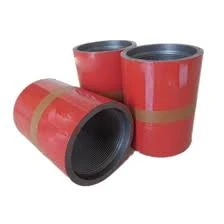- Afrikaans
- Albanian
- Amharic
- Arabic
- Armenian
- Azerbaijani
- Basque
- Belarusian
- Bengali
- Bosnian
- Bulgarian
- Catalan
- Cebuano
- Corsican
- Croatian
- Czech
- Danish
- Dutch
- English
- Esperanto
- Estonian
- Finnish
- French
- Frisian
- Galician
- Georgian
- German
- Greek
- Gujarati
- Haitian Creole
- hausa
- hawaiian
- Hebrew
- Hindi
- Miao
- Hungarian
- Icelandic
- igbo
- Indonesian
- irish
- Italian
- Japanese
- Javanese
- Kannada
- kazakh
- Khmer
- Rwandese
- Korean
- Kurdish
- Kyrgyz
- Lao
- Latin
- Latvian
- Lithuanian
- Luxembourgish
- Macedonian
- Malgashi
- Malay
- Malayalam
- Maltese
- Maori
- Marathi
- Mongolian
- Myanmar
- Nepali
- Norwegian
- Norwegian
- Occitan
- Pashto
- Persian
- Polish
- Portuguese
- Punjabi
- Romanian
- Russian
- Samoan
- Scottish Gaelic
- Serbian
- Sesotho
- Shona
- Sindhi
- Sinhala
- Slovak
- Slovenian
- Somali
- Spanish
- Sundanese
- Swahili
- Swedish
- Tagalog
- Tajik
- Tamil
- Tatar
- Telugu
- Thai
- Turkish
- Turkmen
- Ukrainian
- Urdu
- Uighur
- Uzbek
- Vietnamese
- Welsh
- Bantu
- Yiddish
- Yoruba
- Zulu
pup joint tubing
Understanding Pup Joints in Joint Tubing Systems
In the world of oil and gas operations, the efficiency and reliability of drilling systems are paramount. One of the key components in joint tubing systems is the pup joint. A pup joint is essentially a short length of pipe used to connect two pieces of equipment or to adjust the overall length of the tubing string. These components are particularly crucial in various applications, ranging from drilling to production in the oil and gas industry.
Pup joints come in various sizes and can be produced in different lengths, typically ranging from 2 to 10 feet. The primary purpose of a pup joint is to maintain the integrity and functionality of the piping system by providing necessary adjustments in length. This feature is essential for ensuring that the tubing string fits perfectly within the wellbore, compensating for any discrepancies that may arise during installation or when adjustments need to be made.
Understanding Pup Joints in Joint Tubing Systems
One common scenario where pup joints become essential is during the completion phase of a well. Well completion involves a series of activities to prepare the well for production following drilling. Pup joints are frequently used to fine-tune the length of the completion string, ensuring that it optimally fits the well’s geometry and reaches the desired zone of pay. Furthermore, they enable operators to connect subsurface equipment easily, such as downhole pumps or other specialized tools, without the need to reconfigure the entire tubing setup.
pup joint tubing

In addition to their role in well completion, pup joints are also valuable during maintenance operations. When performing repair tasks or replacement of downhole equipment, pup joints allow for quick adjustments to the tubing string. They often serve as placeholders or extensions that enhance flexibility during maintenance without needing to pull the entire tubing system out of the well.
Moreover, the use of pup joints can significantly reduce operational downtime and enhance overall efficiency. Operators can swiftly navigate challenges encountered during both drilling and production phases by seamlessly integrating pup joints into their systems.
Despite their advantages, it is crucial to ensure that pup joints are properly inspected and maintained. Regular checks should be performed to identify any signs of wear, corrosion, or damage that could compromise the integrity of the joints. Maintaining a safe operational environment ensures that the tubing system functions efficiently and meets safety standards.
In summary, pup joints play an indispensable role in joint tubing systems within the oil and gas industry. Their ability to adjust the length of tubing strings, coupled with their robust construction and compatibility with various equipment, makes them a critical component in both drilling and production operations. By facilitating easy adjustments and providing flexibility during maintenance, pup joints contribute significantly to the efficiency and reliability of oil and gas operations. As the industry continues to advance, the importance of such components will only grow, underscoring the need for ongoing innovation and quality assurance in the manufacturing of pup joints and related technologies.
-
Well Casing Extension Couplings – Applications and InstallationNewsJun.06,2025
-
Types of Crossover Subs in Drilling & CompletionNewsJun.06,2025
-
Key Features of High-Quality Tubing Pup JointsNewsJun.06,2025
-
Installation and Maintenance Tips for Steel Couplings for PipeNewsJun.06,2025
-
How to Select the Right Pup Joint for Oil & Gas OperationsNewsJun.06,2025
-
Applications of Stainless Steel Pipe CouplingsNewsJun.06,2025







